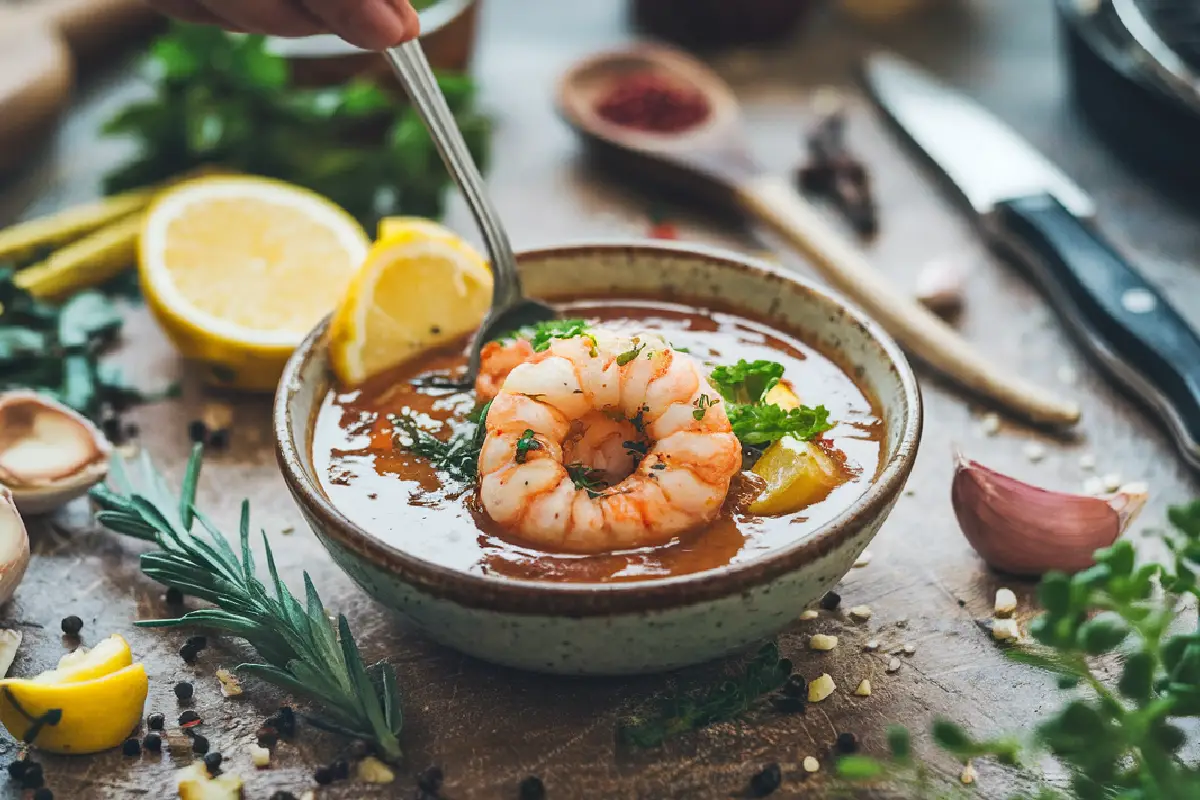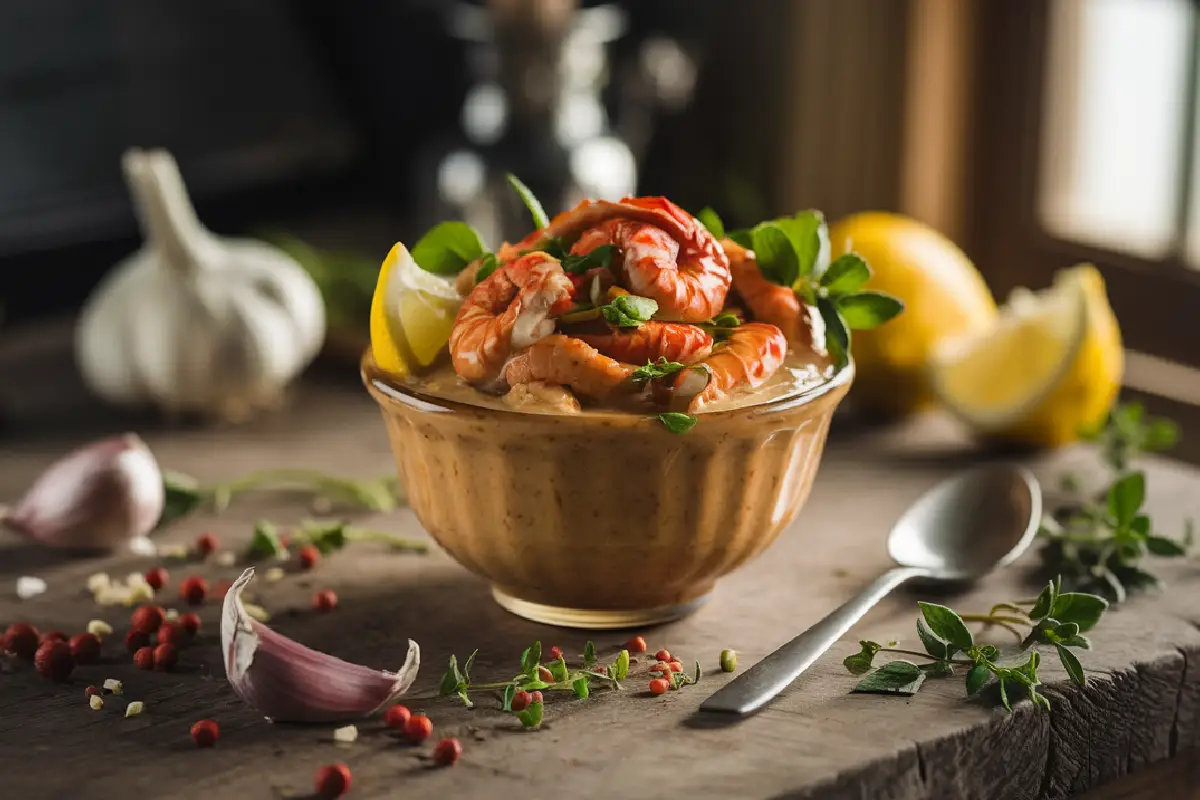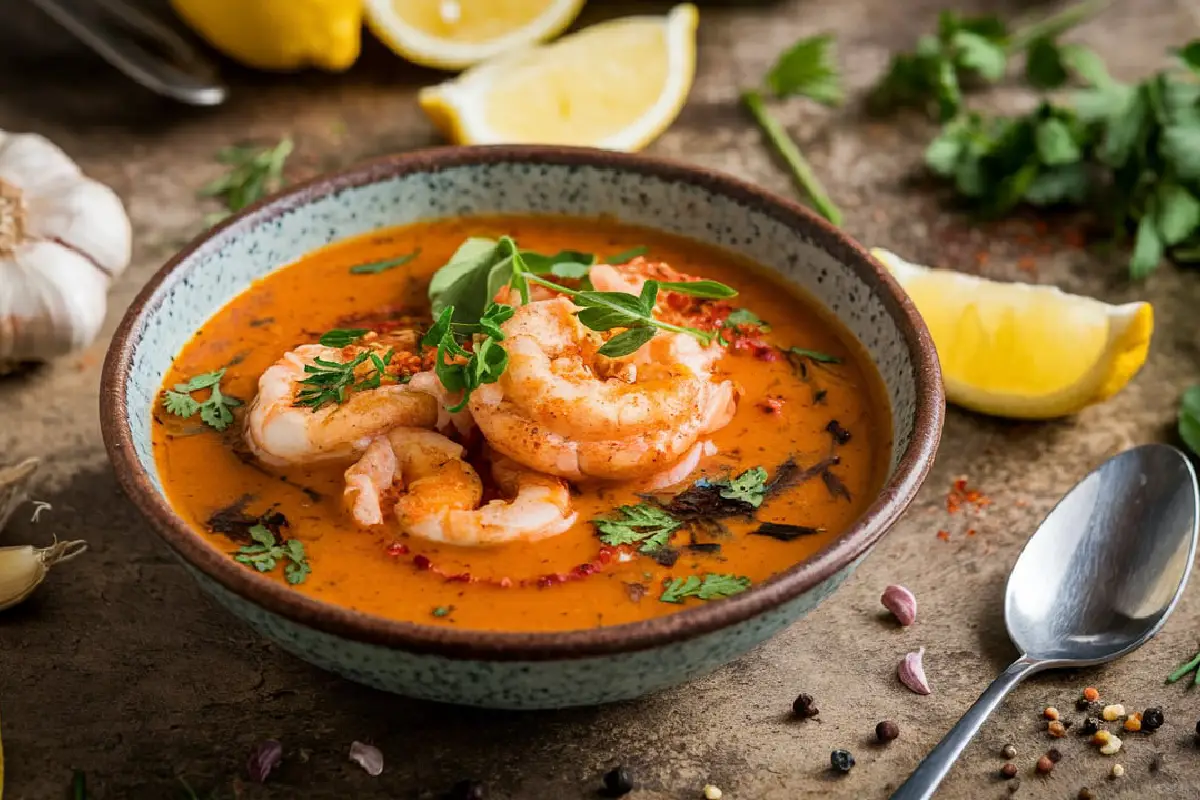Seafood boil sauce is a rich, buttery, and often spicy addition that elevates the flavors of any seafood boil. This sauce, loaded with herbs, spices, and sometimes a hint of sweetness, perfectly complements seafood like crab, shrimp, lobster, and crawfish. But what exactly goes into making this delicious sauce, and why has it become such a staple in seafood boils? Let’s explore the ingredients, variations, and preparation methods that make seafood boil sauce an essential part of any seafood feast.
The Origins of Seafood Boil Sauce
The roots of seafood boil sauce lie in Southern cuisine, particularly within Cajun and Creole traditions. Originating in Louisiana, seafood boils were communal gatherings where friends and families cooked freshly caught seafood, usually in large pots seasoned with a blend of bold spices. These gatherings were more than just meals; they celebrated community, culture, and the bounty of the sea. Over time, the tradition of serving seafood with a rich and spicy sauce evolved into what we now know as seafood boil sauce.
People embraced this sauce because it enhances the flavor of the seafood, balancing the natural sweetness with a blend of spices, butter, and herbs. Additionally, the sauce’s flexibility in heat level and seasoning allows it to be customized to suit any taste, making it a staple in seafood boils across the South.
Why Use Seafood Boil Sauce?
Seafood boil sauce doesn’t just add flavor; it serves multiple purposes in a seafood boil:
-
Enhances the Natural Flavors: The sauce amplifies the sweetness and freshness of the seafood, creating a more balanced and delightful eating experience.
-
Adds Moisture: The buttery base keeps seafood moist and succulent, preventing it from drying out during cooking or while serving.
-
Customizable Heat: You can easily adjust the spice level by varying the amount of hot sauce or chili powder, catering to everyone from spice lovers to those who prefer milder flavors.
-
Adds a Burst of Color and Aroma: Ingredients like paprika and fresh herbs not only add flavor but also make the dish visually appealing and aromatic.
Key Ingredients of Seafood Boil Sauce

Creating a great seafood boil sauce involves carefully selecting and balancing the right ingredients. Below is an in-depth look at each component and its role in the sauce:
-
Butter or Margarine
Butter forms the backbone of seafood boil sauce, providing a creamy, rich base that carries the other flavors. The butter’s fat content enhances the mouthfeel of the sauce, giving it a luxurious texture that coats the seafood beautifully. For those who are lactose intolerant or vegan, margarine or plant-based butter alternatives work well. -
Garlic
Garlic adds a robust, aromatic depth to the sauce, often used fresh or minced to provide a pungent flavor that mellows as it cooks. Alternatively, you can add garlic powder for a more concentrated flavor or use roasted garlic for a sweeter, milder note. -
Paprika and Smoked Paprika
Paprika adds a vibrant red color and a mild sweetness, while smoked paprika introduces a smoky undertone that mimics the flavor of grilled seafood. Combining both types of paprika provides a layered complexity that enhances the overall taste of the sauce. -
Cajun Seasoning
A cornerstone of seafood boil sauce, Cajun seasoning includes spices like cayenne pepper, garlic powder, onion powder, black pepper, and oregano. This seasoning mix brings a fiery kick and depth of flavor characteristic of Cajun cuisine. -
Old Bay Seasoning
This iconic blend of spices combines celery salt, mustard, bay leaf, and red pepper. Old Bay adds a savory, slightly tangy flavor that perfectly complements seafood, enhancing the traditional Southern taste. -
Onion Powder
Onion powder contributes a mild, sweet onion flavor without the need to chop fresh onions. It’s a great addition for enhancing the savory notes and balancing the spiciness of the sauce. -
Lemon Juice or Lemon Zest
The acidity of lemon juice brightens the sauce, cutting through the richness of the butter and providing a refreshing contrast to the spicy and savory elements. Alternatively, you can use lemon zest for a more intense citrus aroma and a touch of bitterness. -
Hot Sauce
Adding a few dashes of hot sauce, such as Tabasco, Sriracha, or Frank’s RedHot, can elevate the sauce with a tangy heat, which you can adjust to your taste preferences. -
Worcestershire Sauce
This ingredient introduces a layer of umami, enhancing the overall depth and complexity of the sauce. -
Brown Sugar or Honey
A small amount of brown sugar or honey adds a touch of sweetness that balances the spiciness and acidity. Moreover, this sweetness creates a caramelized effect when the sauce heats, enhancing the overall experience. -
Fresh Herbs (Parsley, Cilantro)
Fresh herbs like parsley and cilantro add a burst of color and an earthy, slightly bitter flavor that helps to round out the richness of the sauce. Use them as a garnish to add a fresh contrast to the rich and spicy sauce.
Variations of Seafood Boil Sauce
You can customize seafood boil sauce in many ways, each bringing a unique twist to the traditional recipe. Here are some popular variations:
-
Garlic Butter Seafood Boil Sauce
This classic variation focuses on the simplicity of garlic and butter, creating a rich, smooth sauce ideal for dipping crab legs or drizzling over boiled seafood. This version is often milder, appealing to those who prefer less heat. -
Cajun Seafood Boil Sauce
Highlighting Cajun spices, this version is spicier and bolder. The key to this sauce lies in balancing heat and savory flavors, making it perfect for those who love the authentic taste of Louisiana seafood boils. -
Spicy Lemon Garlic Sauce
This tangy twist on the traditional sauce incorporates fresh lemon juice and extra chili flakes. The lemon brightens the flavor, while the added heat from chili enhances the spiciness, making it perfect for shrimp boils. -
Asian-Inspired Seafood Boil Sauce
This fusion recipe combines traditional boil sauce ingredients with Asian flavors like soy sauce, ginger, and chili oil. As a result, the sauce offers a unique and bold taste that pairs well with seafood dishes like shrimp and crab. -
Smoky Paprika Seafood Boil Sauce
This variation emphasizes smoked paprika, giving the sauce a smoky, BBQ-like flavor. Adding chipotle powder or smoked chili peppers can enhance the smokiness, making it an excellent choice for those who enjoy a hint of outdoor grilling in their seafood.
How to Make Seafood Boil Sauce
Making your own seafood boil sauce at home is simple, and it allows you to control the spice level and flavors. Below is a basic recipe that you can adjust according to your preferences.
Ingredients:
- 1 cup butter (or margarine)
- 5 cloves minced garlic
- 1 tablespoon smoked paprika
- 2 tablespoons Cajun seasoning
- 1 tablespoon Old Bay seasoning
- 1 teaspoon onion powder
- 2 tablespoons lemon juice
- 2 teaspoons hot sauce
- 1 teaspoon Worcestershire sauce
- 1 tablespoon brown sugar
- Fresh parsley for garnish
Instructions:
- First, melt the butter in a medium saucepan over medium heat.
- Next, add the minced garlic and sauté until fragrant, about 1-2 minutes. Be careful not to burn the garlic, as it can turn bitter.
- Then, stir in the smoked paprika, Cajun seasoning, Old Bay, and onion powder. Allow the spices to bloom in the butter for about 1 minute, enhancing their flavor.
- After that, add the lemon juice, hot sauce, Worcestershire sauce, and brown sugar. Stir until everything combines well.
- Let the sauce simmer gently for 2-3 minutes, allowing the flavors to meld together.
- Finally, remove from heat, garnish with fresh parsley, and serve warm over your seafood boil.
Tips for Perfecting Your Seafood Boil Sauce
Creating the perfect seafood boil sauce involves balance and patience. Here are some tips to help you get it right every time:
-
Taste as You Go: The balance of flavors is crucial. Therefore, taste the sauce throughout the cooking process, adjusting spices, acidity, or sweetness as needed to achieve your desired flavor profile.
-
Control the Heat: If you prefer a milder sauce, reduce the amount of hot sauce and cayenne pepper. For those who enjoy heat, consider adding more chili powder, crushed red pepper flakes, or even diced jalapeños.
-
Don’t Rush the Garlic: Sauté garlic gently until just fragrant to avoid burning, which can make the sauce taste bitter.
-
Use Fresh Herbs: Fresh parsley, cilantro, or even dill can add a wonderful freshness to the sauce. Add them at the end to maintain their vibrant color and flavor.
Common Mistakes to Avoid
- Overheating Butter: Butter burns easily, especially when mixed with spices. Thus, keep the heat at medium to prevent the butter from browning too much.
- Unbalanced Seasoning: Using too much of any one spice can overwhelm the sauce. Taste and adjust gradually to maintain a harmonious balance.
- Skipping Fresh Ingredients: Fresh garlic, herbs, and lemon juice bring bright and fresh flavors that dried substitutes cannot replicate.
Pairing Seafood Boil Sauce with Different Dishes
The versatility of seafood boil sauce means you can use it beyond seafood boils. Here are some creative ways to incorporate the sauce into other dishes:
-
Dipping Sauce for Bread: Serve the sauce alongside crusty bread, garlic knots, or breadsticks for a delicious dip.
-
Drizzle Over Vegetables: Pour the sauce over roasted or grilled vegetables like asparagus, corn on the cob, or zucchini for an extra burst of flavor.
-
Toss with Pasta: Mix the sauce with cooked pasta and some grilled shrimp or chicken for a quick and flavorful meal.
-
Use as a Marinade: Marinate chicken, shrimp, or even tofu in the sauce for a few hours before grilling or roasting to infuse them with rich, spicy flavors.
FAQs on Seafood Boil Sauce
- Can I Use Olive Oil Instead of Butter?
Yes, olive oil offers a healthier alternative, though it won’t provide the same creamy texture and richness as butter. However, it works well for those looking to reduce saturated fats. - How Can I Make Seafood Boil Sauce Less Spicy?
To make the sauce milder, reduce the amount of hot sauce, chili powder, and Cajun seasoning. You can also add more butter or a bit of cream to mellow out the heat. - What’s the Best Way to Thicken Seafood Boil Sauce?
Allow the sauce to simmer longer to reduce and naturally thicken. For a quicker method, add a small amount of cornstarch slurry (a mix of cornstarch and water) to achieve your desired consistency. - Can I Make Seafood Boil Sauce Ahead of Time?
Yes, you can make the sauce in advance and store it in an airtight container in the fridge for up to a week. Reheat gently on the stovetop or in the microwave before serving. - How Do I Use Seafood Boil Sauce for Other Dishes?
This sauce is versatile and works as a dip, drizzled over pasta, mixed into rice dishes, or even spread on sandwiches.
Conclusion

Seafood boil sauce is a versatile, flavorful addition that can transform any seafood dish. Its combination of buttery richness, spices, and fresh herbs creates a sauce that’s perfect not only for seafood boils but also for a wide variety of other dishes. By experimenting with different ingredients and variations, you can create a sauce that perfectly suits your taste. Whether you prefer it mild, spicy, smoky, or sweet, there’s a seafood boil sauce for everyone. Try incorporating the sauce with dishes like Argentine Shrimp with Linguine for a fresh twist on classic recipes.
Enjoy experimenting with seafood boil sauce, and discover the many ways it can elevate your next meal!

